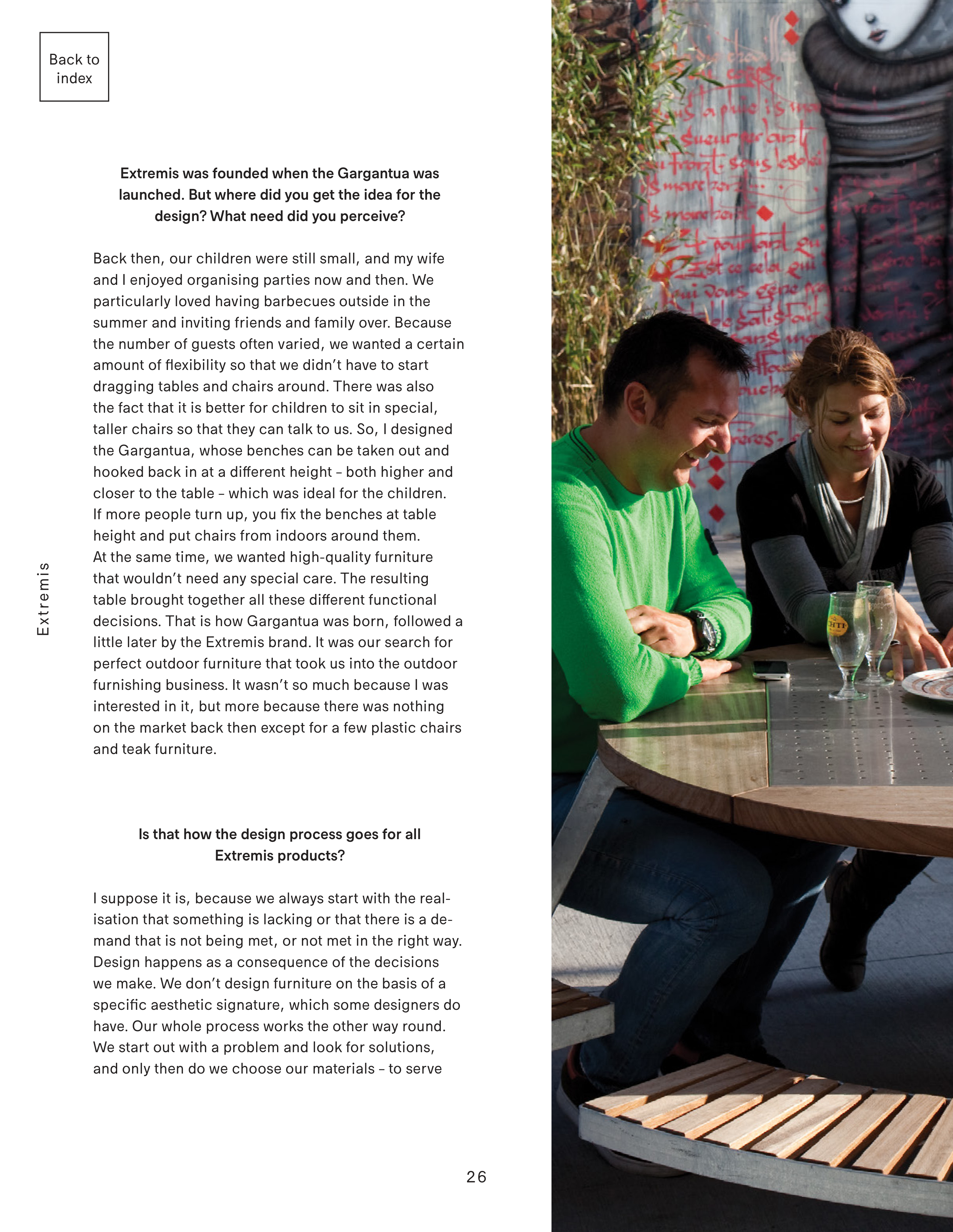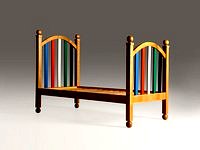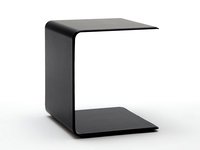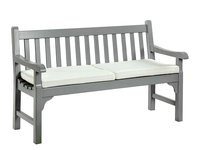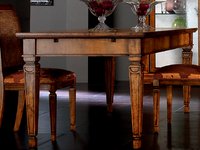Extremis was founded when the Gargantua was
launched. But where did you get the idea for the
design? What need did you perceive?
Back then, our children were still small, and my wife
and I enjoyed organising parties now and then. We
particularly loved having barbecues outside in the
summer and inviting friends and family over. Because
the number of guests often varied, we wanted a certain
amount of flexibility so that we didn’t have to start
dragging tables and chairs around. There was also
the fact that it is better for children to sit in special,
taller chairs so that they can talk to us. So, I designed
the Gargantua, whose benches can be taken out and
hooked back in at a different height – both higher and
closer to the table – which was ideal for the children.
If more people turn up, you fix the benches at table
height and put chairs from indoors around them.
At the same time, we wanted high-quality furniture
that wouldn’t need any special care. The resulting
table brought together all these different functional
decisions. That is how Gargantua was born, followed a
little later by the Extremis brand. It was our search for
perfect outdoor furniture that took us into the outdoor
furnishing business. It wasn’t so much because I was
interested in it, but more because there was nothing
on the market back then except for a few plastic chairs
and teak furniture.
Is that how the design process goes for all
Extremis products?
I suppose it is, because we always start with the real-
isation that something is lacking or that there is a de-
mand that is not being met, or not met in the right way.
Design happens as a consequence of the decisions
we make. We don’t design furniture on the basis of a
specific aesthetic signature, which some designers do
have. Our whole process works the other way round.
We start out with a problem and look for solutions,
and only then do we choose our materials – to serve
Extremis
26
Back to
index


